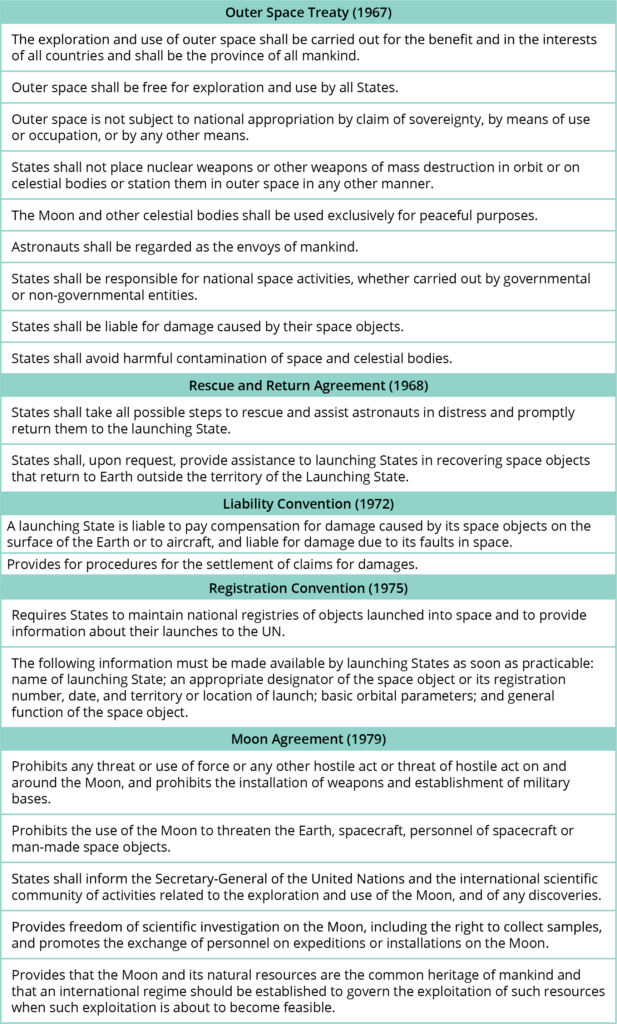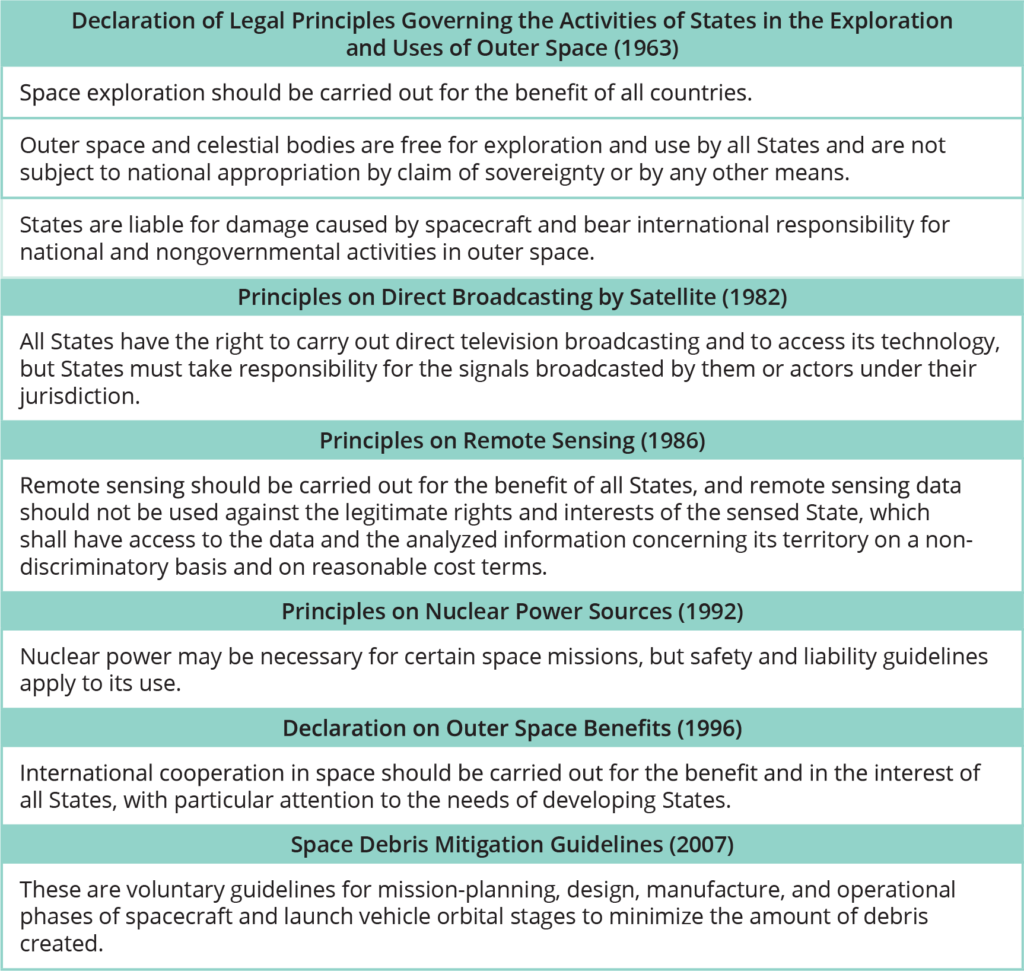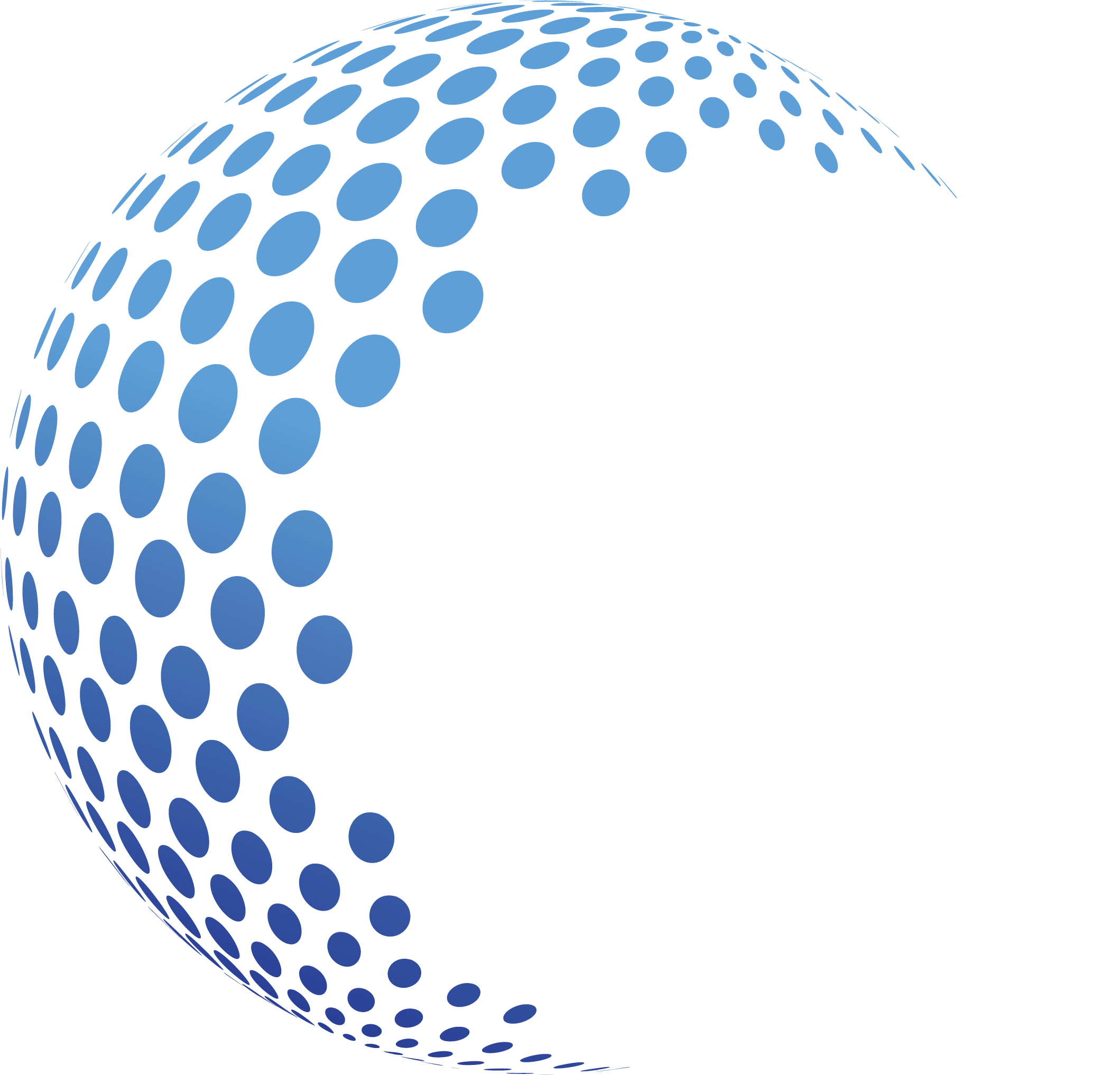INTERNATIONAL LAW IN OUTER SPACE
In addition to the United Nations Charter, five treaties negotiated at the UN Committee on the Peaceful Uses of Outer Space (UN COPUOS) are considered to form the basis of international space law. The Treaty on Principles Governing the Activities of States in the Exploration and Use of Outer Space, including the Moon and Other Celestial Bodies (Outer Space Treaty) provides the fundamental basis for legal order in outer space, with subsequent agreements elaborating on its key principles.


UNITED NATIONS PRINCIPLES
In addition to the above treaties, six resolutions known as principles have been adopted by the UN General Assembly for the regulation of special categories of space activities. Although these principles are not legally binding, they provide internationally approved guidelines on appropriate state conduct.

Key UN Space Principles

Additionally, UN COPUOS adopted a set of voluntary guidelines on the long-term sustainability of outer space in 2019; these have not yet been adopted by the UN General Assembly but do form part of the network of space governance instruments.
CHALLENGES
Treaty-based law governing outer space leaves unresolved many technical issues related to space governance, including questions about:
• the placement of conventional weapons or use of force in outer space;
• means of international cooperation and universal access;
• long-term sustainability of the space environment;
• space traffic management; and
• such emerging issues as the exploration of celestial bodies and the utilization of space-based mineral resources.
In particular, the implications of the treaty’s definition of “peaceful purposes” have been the subject of debate among spacefaring states. The interpretation initially favoured by Soviet officials viewed peaceful purposes as wholly non-military. However, space assets have been developed extensively to support terrestrial military operations; the position that “peaceful” in the context of the OST means “nonaggressive” has generally been supported by state practice. Article IV of the OST bans the placement of weapons of mass destruction in outer space, as well as military activities on celestial bodies, but is otherwise silent on the use of conventional weapons in orbit. While space actors have stopped short of deploying weapons in space or attacking the space assets of another nation from Earth, antisatellite capabilities have been tested by some states against their own satellites—for example, by China in 2007, the United States in 2008, and India in 2019.
RESOURCES
United Nations Office for Outer Space Affairs, “Space Law Treaties and Principles,” https://www.unoosa.org/oosa/en/ourwork/spacelaw/treaties.html#:~:text=ST%2FSPACE%2F61Rev2-,Treaties,Moon%20and%20Other%20Celestial%20Bodies.
Ivan A. Vlasic, “The Legal Aspects of Peaceful and Non-Peaceful Uses of Outer Space,” in Bupendra Jasani (ed.), Peaceful and Non-Peaceful Uses of Space: Problems of Definition for the Prevention of an Arms Race in Outer Space (London: Taylor and Francis, 1991).
Frans von der Dunk, ed., Handbook of Space Law (Cheltenham: Edward Elgar Publishing, 2015), https://www.e-elgar.com/shop/gbp/handbook-of-space-law-9781781000359.html.

